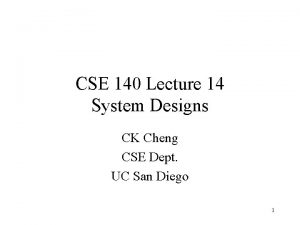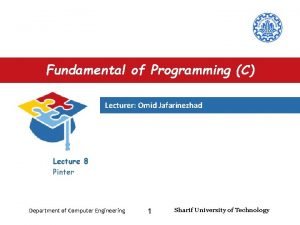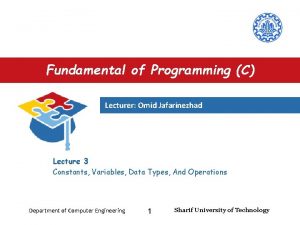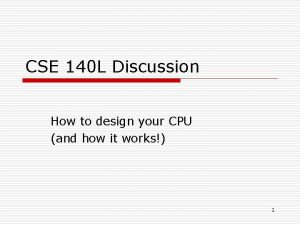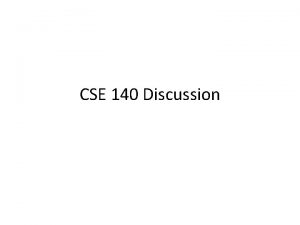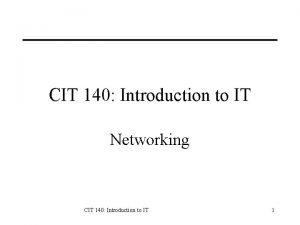CSE 140 Discussion 1 Omid Assare HW 1










- Slides: 10

CSE 140 Discussion 1 Omid Assare

HW 1: Introduction • The purpose of this assignment is three-fold: – Practice the application of Boolean algebra theorems to transform and reduce Boolean expressions. – Go from the world of Boolean expressions to the world of digital circuits. – Translate a problem described in words to a Boolean algebraic expression.

Problem 2. 1 • Prove De. Morgan’s Law using Boolean algebra – (AB)’ = A’ + B’ – (A + B)’ = A’B’ – Hint: To prove LHS’ = RHS, show RHS is complement of LHS, i. e. , • LHS. RHS = 0, and • LHS + RHS = 1.

Problem 2. 2 • Consensus Theorem – AB + BC + A’C = AB + A’C – (A + B)(B + C)(A’ + C) = (A + B)(A’ + C) – Use Boolean algebra to prove • Hint: same steps as in proving consensus theorem.

Problem 2. 3 • Shannon’s Expansion: – f(a, b, c) = a. f(a=1, b, c) + a’. f(a=0, b, c) – f(a, b, c) = (a + f(a=0, b, c)). (a’ + f(a=1, b, c)) – Which variable to choose? • Hint: Consensus theorem

Problem 3 • Problem (English) to truth table • Truth table to Boolean algebra – Sum of products – Product of sums • Example: – 3 -bit input: x 1, x 2, x 3 – Output y = 1 when number of 1’s in input is odd and y = 0 otherwise.

Example x 1 x 2 x 3 y minterm MAXterm 0 0 x’ 1. x’ 2. x’ 3 x 1+x 2+x 3 0 0 1 1 x’ 1. x’ 2. x 3 x 1+x 2+x’ 3 0 1 x’ 1. x 2. x’ 3 x 1+x’ 2+x 3 0 1 1 0 x’ 1. x 2. x 3 x 1+x’ 2+x’ 3 1 0 0 1 x 1. x’ 2. x’ 3 x’ 1+x 2+x 3 1 0 x 1. x’ 2. x 3 x’ 1+x 2+x’ 3 1 1 0 0 x 1. x 2. x’ 3 x’ 1+x’ 2+x 3 1 1 x 1. x 2. x 3 x’ 1+x’ 2+x’ 3 SOP: y = x’ 1. x’ 2. x 3 + x’ 1. x 2. x’ 3 + x 1. x’ 2. x’ 3 + x 1. x 2. x 3 POS: y = (x 1+x 2+x 3). (x 1+x’ 2+x’ 3). (x’ 1+x’ 2+x 3)

Problem 4 • Useful tools for simplification: • a + ab = a (Absorption) • a + a’b – add consensus: a + a’b + b – absorption: a + b • ad + bcd + a’c – add consensus: ad + bcd + a’c + cd – absorption: ad + a’c + cd – remove consensus: ad + a’c

ad + b’d + a’bc’ + a’b’c + abc #nets: #variables + #operators #pins: #literals + #gates*2 – 1 • #Variables: • 4 • #Literals: • 13 • #Operators: • 6 • #Gates: • 6 • #Nets: • 10 • #Pins: • 24

BSV Demo • Problem 5 – Test your code • Problem 4 – Test function equivalence



